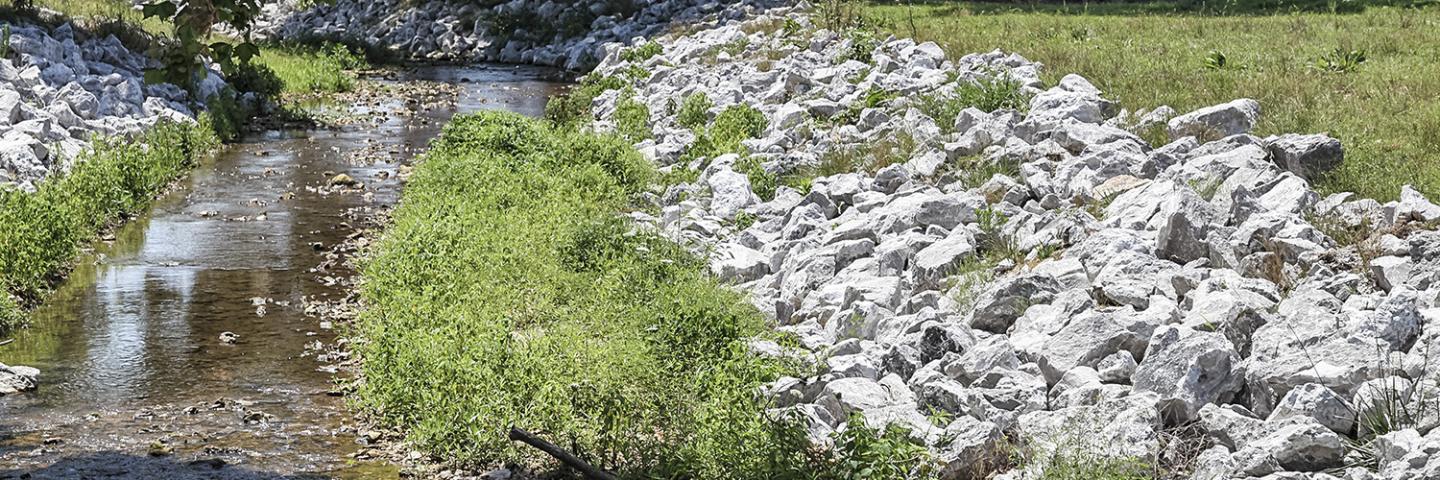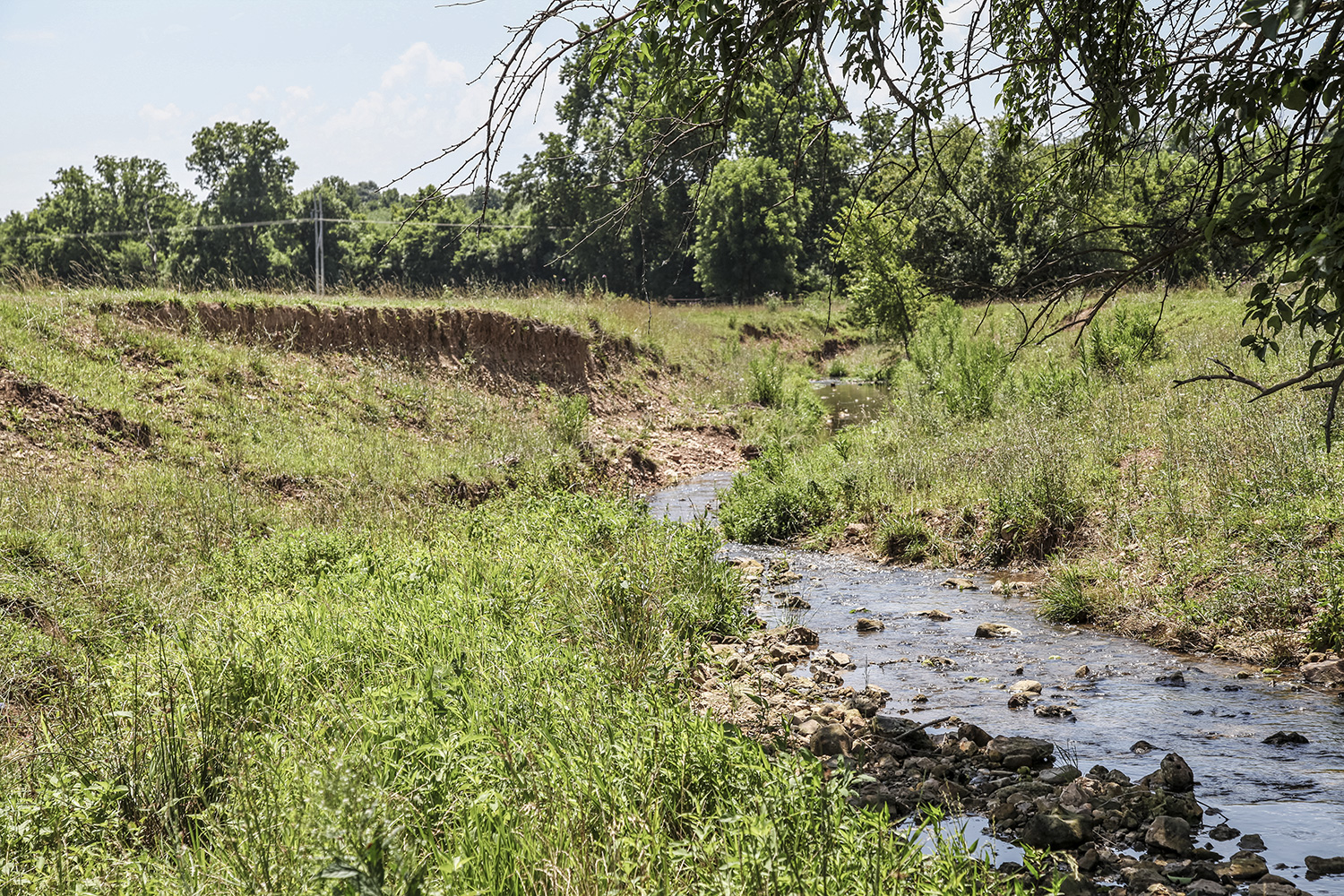Streambank Work Reduces Soil Loss

by Creston Shrum
Public Affairs Specialist
Gary Harral was losing a foot of pasture a year along a 2,400 feet section of the Anderson Branch of the Little Osage Creek in Northwest Arkansas.
Estimated soil loss from the streambank erosion was 800 tons, the equivalent of 1,600 pickup truck loads. That sediment eventually reaches the Illinois River downstream of his farm.
But, thanks to a USDA Natural Resources Conservation Service project started in 2010, he was able to get help to address the erosion issue on his 141-acre Benton County farm.
The Illinois River Sub-Basin and Eucha-Spavinaw Lake Watershed Initiative Project (IRWI) is a voluntary program that provides financial and technical assistance to agricultural producers for addressing water quality concerns in northwestern Arkansas and northeastern Oklahoma.
“Gary’s project consisted of bank shaping and protection by pulling the creek bank back on a 2:1 slope, installing a rip-rap toe in the streambed and placing geotextile and rock rip-rap on the shaped banks up to the normal bank,” said Josh Fortenberry, NRCS soil conservationist at the Bentonville Field Service Center.
In addition to the streambank work, he fenced off both sides of the stream to keep his livestock out of the creek and installed cross fencing. Harral also added armored livestock crossings.
“Thanks to this project I’m able to rotate cattle better and produce more grass because of the cross fencing. I’ve also reduced the amount of erosion washing into the Illinois River Watershed,” said Harral, who was born and raised on the farm, and runs spring calving cows and produces hay.
The project is designed to improve water quality by reducing sediment loss caused by excessive bank erosion. The stabilization will also reduce the amount of pasture loss. Limiting the livestock access to the stream will improve water quality by reducing the amount of nutrients entering the water in the form of manure and urine.
The goal of IRWI is to improve water quality in the watershed (which includes Lake Tenkiller, Lake Eucha and Lake Spavinaw in Oklahoma) while maintaining the food and fiber production in the area.
The project is in portions of Benton and Washington counties in Arkansas and parts of Adair, Cherokee, Delaware, Mayes and Sequoyah counties in Oklahoma


